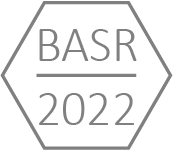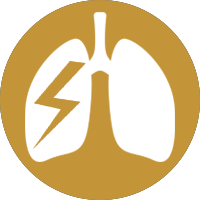Tuberculosis
Tuberculosis (TB) is a bacterial infection that causes lung disease. TB is still one of the deadliest infectious diseases by a single pathogen in the world. Progress made in the years up to 2019 has slowed, stalled, or reversed, and global TB targets are off track (WHO report 2022). For the first time in over a decade TB death increased in 2022 to 1.6 million. Only to be surpassed by the number of people who died of COVID (3.55 million in 2021). COVID 19 has severely impacted on access to essential services put in place to fight TB. Fewer people were diagnosed and treated or provided with TB preventive treatment and fewer resources (funding) for essential TB services and R&D were available. In addition, we are still confronted with the fact that approximately 25% of the world population is latently infected with TB.
Antibiotics are currently the only treatment options in bringing the disease down. However, anti-microbial drug resistance in TB is on the rise, which makes it harder to treat. Overall, a growing number of TB infected people cannot be treated and die of the disease. Prevention by vaccination is important to break the cycle of TB transmission and infection.
BPRC continues to use nonhuman primate models of TB, specifically the rhesus monkey and the cynomolgus monkey, to get a better insight in how the disease develops and to evaluate new treatments of TB. TB in these 2 species represents two different disease manifestations. TB in rhesus monkeys develops as a progressive active form of the disease, while infection of cynomolgus monkeys can also develop as a latent disease. Together, these models best recapitulate the range of manifestations of tuberculosis in man.
Local administration of BCG-vaccine is superior to classical skin immunization continued

Vaccines aim at the induction of long-lived immune memory specific for the disease you vaccinate against. This memory is mediated by the adaptive immune system consisting of T and B cells. The role of the innate immune system in the context of vaccines is primarily considered to provide the proper help to stimulate the adaptive response. Innate immune responses and function were considered constant and invariable over time. Over the last decade, however, it has become clear that also innate immune cells, like monocytes, macrophages and NK cells can adjust and display memory-like phenotypes. This innate immune 'memory' is now typically referred to as trained immunity. BCG is the prototypical vaccine that, next to a TB-specific effect, can induce trained immunity and provides broad (heterologous) protection against disease from other respiratory infections.
We have previously shown that mucosal vaccination with BCG delivered in the lung provided better protection against TB than classical immunization in the skin and that this protection was associated with unique TB specific local adaptive immune responses.
Read more > article and commentary.
We extended our analyses of the immune response observed after mucosal vaccination with BCG and established that these vaccine-induced T cells in the lung were endowed with increased expression of homing markers and tissue residency markers.
We showed for the first time in nonhuman primates that we can recapitulate the trained immunity phenotype observed in humans after standard TB vaccination in the skin. In addition, we demonstrated that mucosal vaccination through the lung results in improved trained immunity compared to the standard vaccination.
The new vaccine candidate MTBVAC that was derived form a human clinical isolate of mycobacterium and is now in phase III of clinical development, was equally potent in the induction of trained immunity after mucosal vaccination as BCG.
To make mucosal delivery in the lung translatable to the clinic we further demonstrated that aerosol delivery, of MTBVAC with a nebulizer, instead of endobronchial instillation, provided robust protection against TB disease compared to non-vaccinated control animals. MTBVAC delivered through aerosol induced comparable immune signatures to what we have seen before upon pulmonary mucosal MTBVAC instillation. (manuscript in preparation).
These results provide support to strategies for improving TB vaccination and prompted us to further investigate whether the mucosal whole cell vaccination could be used for revaccination purposes.
Standard intradermal BCG vaccination is given to millions of children every year to protect them from TB in their childhood. However, at the age of adolescence, the protective efficacy of revaccination standard intradermal BCG against pulmonary TB is highly variable ranging from 0-80%. Altering the route of vaccination in adults (revaccination) might be a way to improve efficacy in these adults.
We established that mucosal BCG revaccination after a standard intradermal BCG vaccination resulted in a reduction of TB disease and that this was associated with the same unique local immune signature as was observed with mucosal vaccination in naïve animals (manuscript in preparation).
TO TOP ^ < BACK << HOME


